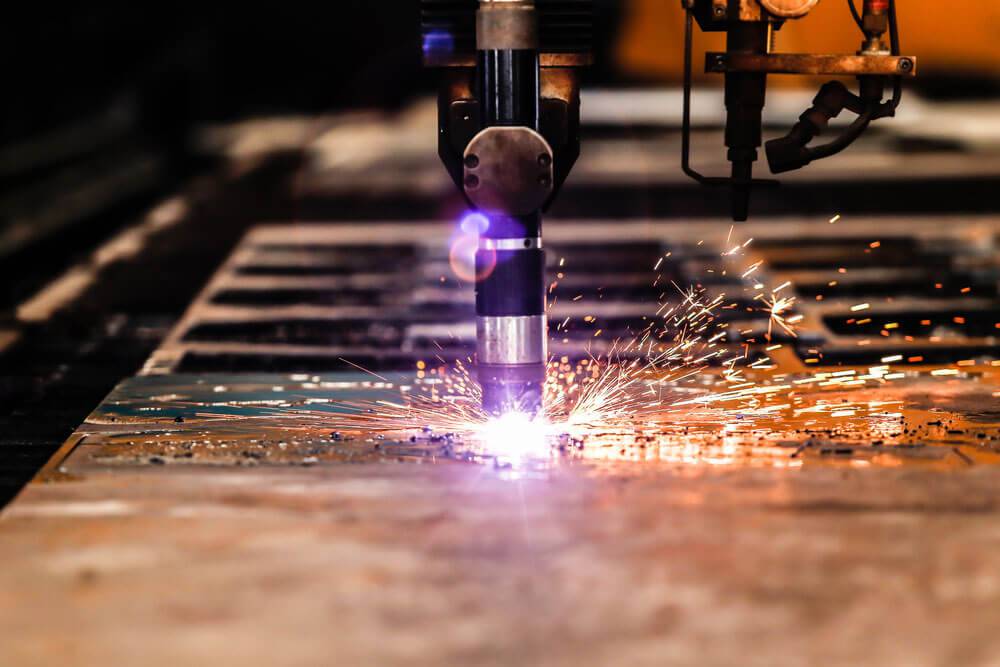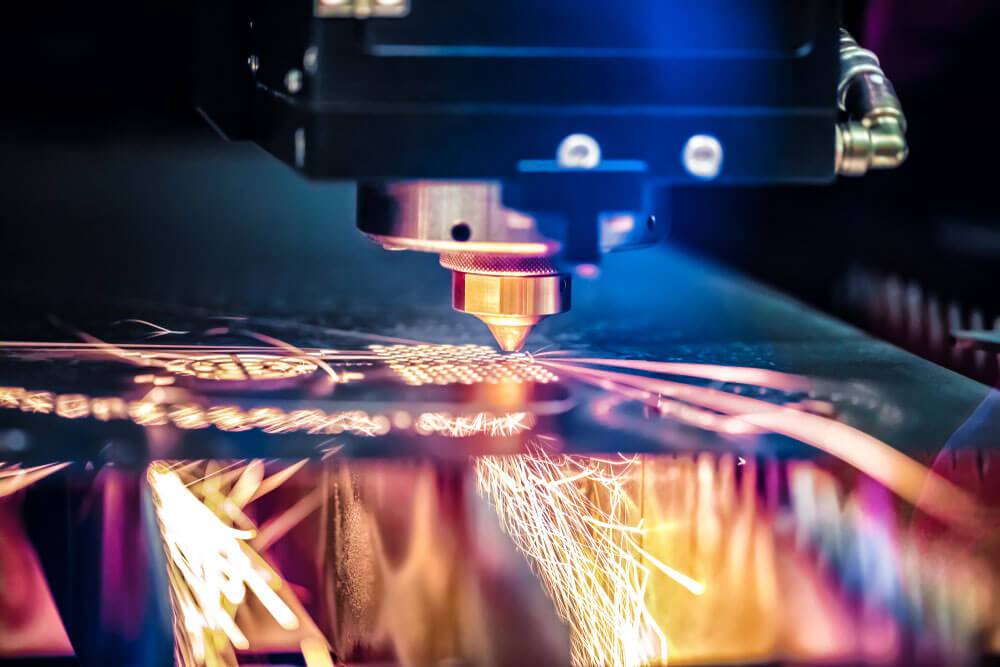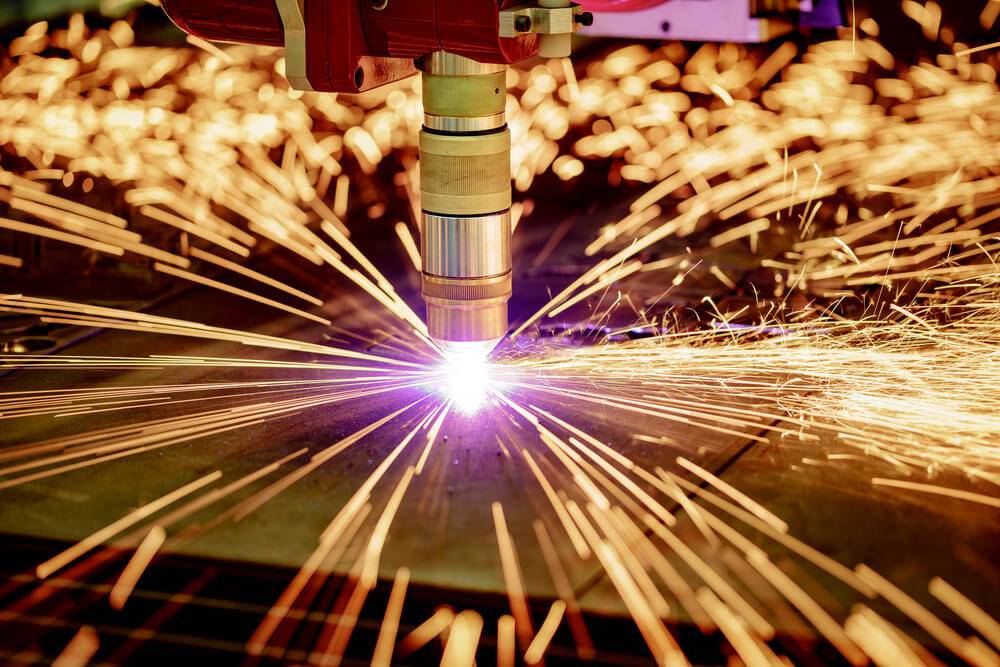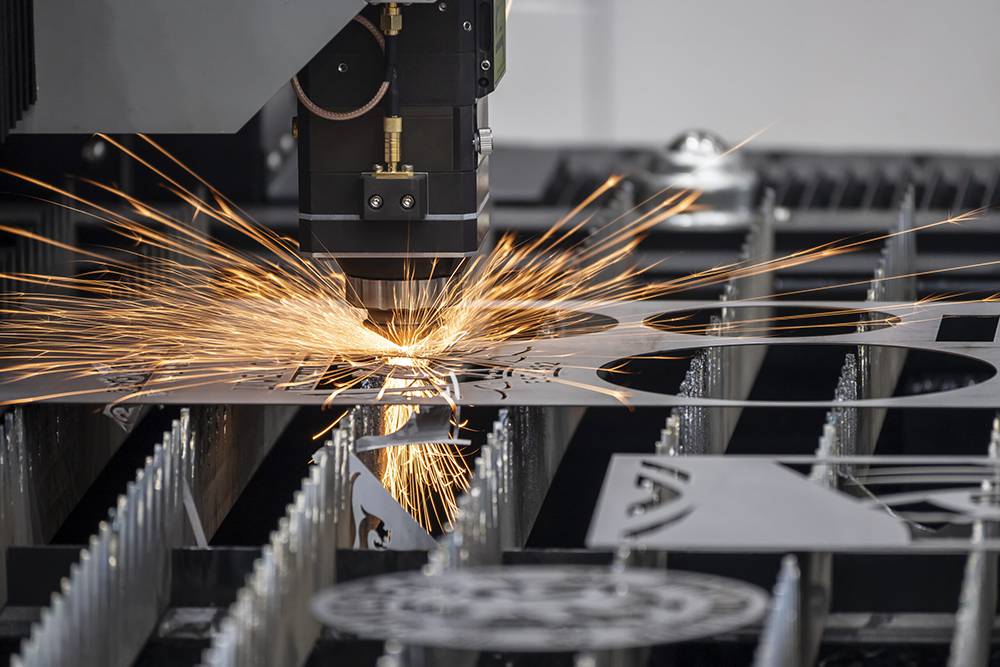The Science Behind Precision Sheet Metal Laser Cutting Services
Remember those days when you were younger, armed with a magnifying glass, and you’d amaze yourself (and maybe even start a small fire) by focusing sunlight into an intense, pinpoint beam? Well, laser cutting, in some ways, is like taking that childhood experiment to a whole new level. It’s science fiction meets precision engineering, and it’s revolutionizing the way we shape and manipulate metals with precision sheet cutting metal services. In this article, we’re going to explore the ins and outs of laser cutting, from the basic principles of how it works, the science behind it, and it’s application in precision sheet metal cutting services.
So, grab your sunglasses, and maybe a notepad, and let’s talk about the power of focused light and how it can literally cut through steel like a hot knife through butter!

The Basics of How CNC Laser Cutting Machines Work
Laser cutting is a subtractive manufacturing process that uses a high-powered laser beam to vaporize or melt materials. CNC laser cutting allows for precision cuts in intricate patterns in various standard sheet metals. Laser cutting can handle not only tight tolerances, but also exceptional speed and efficiency making it an ideal candidate for prototyping and other rapid sheet metal services.
The first laser cutting machine was invented in the early 1960s. It was a significant development in the field of manufacturing and fabrication. The concept of using laser technology for cutting materials was initially proposed and experimented with shortly after the invention of the laser itself in 1960. The first working laser cutting machine was developed by Kumar Patel, a scientist at Bell Labs, and it used a carbon dioxide (CO2) laser. This invention marked the beginning of the laser cutting technology that has since become a crucial tool in various industries for precise and efficient material cutting.
Let’s take a deeper look at how commercial laser cutting manufacturing machines work.
Laser Generation: The central component of a laser cutting metal machine is where it gets its namesake: the laser and its source. Typically, in commercial laser cutting services, either a CO2 laser or a fiber laser is utilized. In a CO2 laser, a mix of gasses, including carbon dioxide, nitrogen, and helium, is excited electrically to produce a laser beam. Conversely, in a fiber laser, laser generation relies on optical fibers infused with rare-earth elements.
Focusing: After the source generates the laser beam, it is then directed through a series of mirrors and lenses which focuses the beam to an extraordinary degree, allowing it to become a highly concentrated energy point. This process produces an exceptionally powerful and focused laser beam that can reach temperatures that can exceed 20,000 degrees Celsius or 36,000 degree Fahrenheit. So basically, insanely hot!
Laser Beams vs Raw Materials: When the intense laser beam makes contact with the metal surface, it either melts or vaporizes the material at the point of impact. The type of laser used and the power level determine whether melting or vaporization occurs, but the end result is a nice clean cut into various metals, such as aluminum or steel.
The CNC Machining Process: Commercial laser cutting sheet metal services are equipped with Computer Numerical Control (CNC) systems, which control the movement of the laser head with extreme precision and accuracy. This allows standard sheet metals to receive exact cuts and high tolerances even for intricate designs.
Now that we have the basics of how commercial laser cutting services work, let’s talk about why they are so effective on sheet metals such as steel and aluminum.

The Science Behind Laser Cutting Sheet Metal & Why Its So Effective
So now that we know the basics of how metal laser cutting machines work for sheet metals, let’s explore the science behind why metal laser cutting is such an effective process for sheet metals. There are a few key factors to consider when discussing the efficiency and manufacturability of laser cutting sheet metals. These scientific principles further explain why laser cutting sheet metal services are an ideal manufacturing operation for two dimensional CAD designs:
Absorption: The choice of laser type is crucial because different materials absorb different wavelengths of light. Metals, such as steel and aluminum, predominantly absorb the energy from fiber lasers, making them the preferred choice for cutting metals. This absorption is due to the interaction between the laser beam’s photons and the metal’s electrons, leading to rapid heating.
Thermal Conductivity: Metals are excellent conductors of heat, and during laser cutting, heat is quickly conducted away from the cut zone. This ensures that the material surrounding the cut remains relatively unaffected, resulting in clean, precise edges.
Material Thickness: The thickness of the metal being cut also influences the laser cutting process. Thin materials require less energy to cut through, while thicker materials may require multiple passes or a higher laser power.
Gas Assist: In many laser cutting processes, an assist gas, such as oxygen or nitrogen, is used to improve the cutting quality. These gasses aid in the removal of molten metal and debris from the cut zone, preventing re-solidification and achieving a smoother finish.

Applications and Limitations of Laser Cutting Services
Laser cutting metal machines have a broad spectrum of applications, from aerospace and automotive industries to jewelry design and architectural detailing. Recent advancements in the field have led to increased precision, speed, and versatility.
However, commercial laser cutting machines do have some limitations. The most significant constraint is the material thickness. While lasers can effectively cut through thin to moderately thick metals, they struggle with materials that exceed a certain thickness threshold. This limitation is due to the limited power and focal depth of the laser beam. Additionally, highly reflective materials like copper can pose challenges as they tend to reflect the laser light rather than absorbing it, reducing cutting efficiency.
Laser cutting plastic sheets also poses some potential drawbacks, due to an array of factors such as:
Material Variability: Plastic materials can have more variability in their composition and physical properties compared to metals. This variability can lead to inconsistencies in how the laser interacts with the material, resulting in less predictable and accurate cuts.
Melting and Resolidification: When a laser cuts through plastic, it can cause localized melting of the material. This molten plastic can then resolidify as the laser beam moves, potentially creating irregularities in the cut, especially on thin or small features.
Heat Sensitivity: Some plastics are more sensitive to heat than metals. Excessive heat generated during laser cutting can cause distortion, warping, or burning of the plastic, affecting the accuracy of the cut.
Melt Ejection: The molten plastic created during laser cutting may be ejected from the cutting area, leading to additional inconsistencies in the cut edges. This is especially problematic for thermoplastic materials such as polycarbonate and polyurethane.
Beam Absorption: Different plastics have varying levels of absorption of laser energy. Some plastics may absorb the laser beam differently, leading to variations in the overall cutting accuracy in both small and large scale production runs.
Cut Edge Quality: Plastic materials can produce less smooth and precise cut edges compared to metals, which often result in a more polished cut surface. This may be acceptable for some applications, but it can affect the overall accuracy, especially when fine details or tight tolerances are required.
To be clear, laser cutting for plastics, such as acrylic or nylon, is a viable option for many two dimensional plastic projects. In fact, many plastics see the same benefits and efficiencies that can be seen with laser cutting sheet metal services, but due to the scientific nature of the raw materials, it is less likely that laser cut plastics will ever reach the same tolerances of precision compared to their sheet metal counter parts.
Another limitation when discussing the laser cutting manufacturing process is the cost of laser cutting equipment and maintenance they require, which can be prohibitive for smaller businesses, making it less accessible for some industries to facilitate in-house manufacturing. However, the custom CNC manufacturing industry allows for laser cutting metal services to be easily outsourced to a qualified manufacturer. So despite these limitations, laser cutting remains a versatile, valuable tool, and accessible process for a wide range of metal fabrication applications.

Precision Driven by Technology
It’s safe to say that this technology is nothing short of remarkable. Much like the awe we felt as kids, wielding magnifying glasses to harness the power of focused light, laser cutting takes that concept and propels it into a futuristic realm. It’s a bit like watching a James Bond movie unfold before our very eyes, where precision and power combine to create astounding results.
From understanding the basics of how lasers work their magic to discovering the intricate dance of materials meeting light, we’ve peeled back the curtain on this innovative process. We’ve seen how laser beams can slice through metal with surgical precision, crafting everything from intricate jewelry pieces to towering skyscrapers.
As we conclude this journey, let’s not forget the sense of wonder and curiosity that brought us here, harking back to the days when we marveled at the simple science of sunlight and magnifying glasses. Laser cutting is a testament to human ingenuity, pushing the boundaries of what’s possible in the world of manufacturing and design. So, the next time you see a laser cutter at work or watch a high-tech heist in a James Bond flick, remember that you’re witnessing the intersection of science, art, and imagination.
Overall, we can all agree, laser cutting is extremely cool – even if that laser can get pretty hot! Scientists learned how to harness and manipulate the power of focused light into a powerful yet highly precisive tool.
The scope and accessibility of laser cutting services has grown tremendously over the past two decades making it affordable for both large and small businesses alike. Whether it’s for fabricating intricate designs for aerospace components, cutting layouts for intended bends to create enclosures, or decorative signs for the outside of your business or home, laser cutting sheet metal services have proven to be a dependable and fast manufacturing process ideal for nearly any two dimensional project.